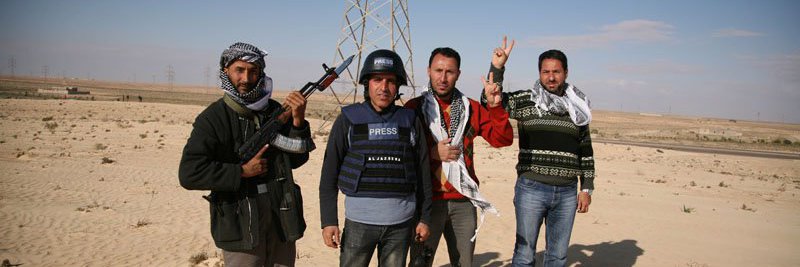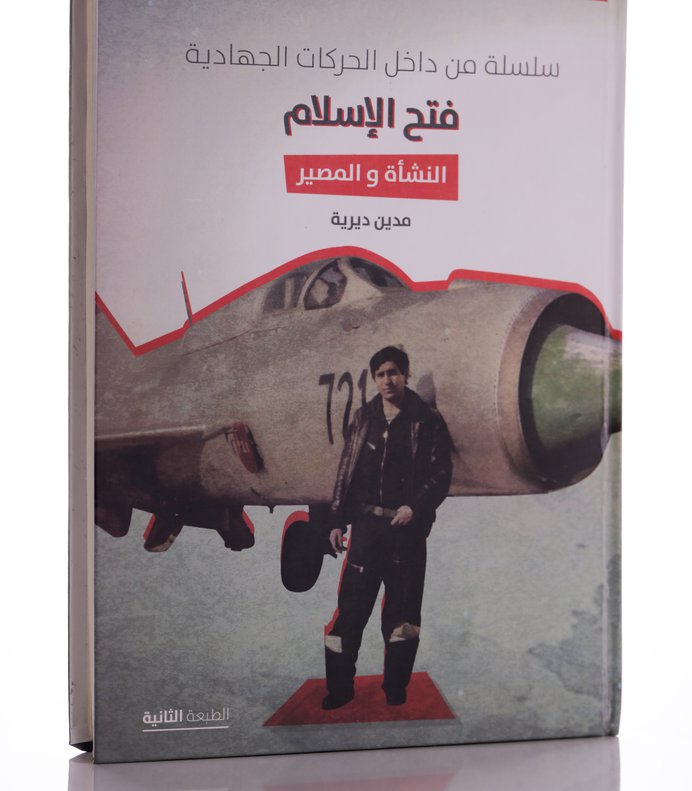Fatah Al-Islam: Origin and Destiny


FROM INSIDE THE JIHADIST MOVEMENTS
Fatah Al-Islam: Origin and Destiny
The book “Fatah Al-Islam: Origin and Destiny” by journalist and filmmaker Medyan Dairieh sheds light on the Fatah Al-Islam organisation, its founder and leader Shaker Al-Absi, and other major members within the organisation. Dairieh draws the chronology of events of the Jihadi organisation and analyses in great depth the stages of its evolution, with great focus on the 2007 fierce battle in Lebanon's northern Palestinian refugee camp of Nahr al-Bared. The author‘s aim is to unravel the real nature and the exact facts about Fatah Al-Islam which go far beyond the official accounts, and to try and understand the deliberate intention to obliterate the organisation in the 100-days Nahr Al-Bared battle, with hardly any survivor to recount the facts. The book also reveals Fatah Al-Islam connections to Al-Qaeda and the Islamic State. All the information in the book has been gathered from inside the organisation and includes a biography of its founder Al-Absi and ample descriptions of its main members. The book, which is in the Arabic language, is the revised edition of the first volume of the book series “From inside the Jihadist movements” by author Medyan Dairieh, and it was first published in August 2018.
If you are interested in purchasing one or more copies of the books please email us at: books@medyandairieh.com
The series of books “From Inside the Jihadist Movements” constitutes a collection of unique and complex accounts and investigative reports about Jihadist organizations, in particular Fatah Al-Islam, Al-Qaeda, and the Islamic State. Journalist and film-maker Medyan Dairieh has been undertaking much research and investigation on the ground over several years, during which he has been gathering a vast body of information and conducted exclusive interviews, which form the core of his book series. Following his visits to Iraq, Syria, Yemen, Libya, Afghanistan, Somalia, Lebanon, and the Ein Al-Helwa Palestinian refugee camp, Dairieh has compiled a large number of reports and made several documentaries on these Jihadist groups. The studies and investigations which Dairieh completed have led to the disclosure of secret documents, revelations, pictures, videos, as well as letters hand-written by the leaders of these organisations which are being disclosed for the first time.
In Part 1 of the series, which is entitled “Fatah Al-Islam: Origin and Destiny” and was first released in 2018, the author sheds light on Fatah Al-Islam from inside the organisation, and draws its chronology to explain the various stages in its evolution as well as its reality on the ground. The author also intended to narrates accurately the stories of those who lived through the events more than eleven years after the battle of Nahr Al-Bared, when all memories and recollections seemed lost.
The battle of Nahr Al-Bared was without any doubt the decisive and final chapter in the existence of Fatah Al-Islam, in terms of its structure and its survival. In 2007 Lebanon and the world witnessed a bloody battle in the Nahr Al-Bared Palestinian refugee camp in northern Lebanon that lasted 100 days, and that led to the killing of most of the organization’s members. Only two of the members who had survived the fight managed to escaped from capture and were able to disclose the real facts of that fierce battle. Facts that contrasted with the numerous interpretations and analyses which had followed the appearance and announcement of Fatah Al-Islam and its developments. The book also includes an exclusive interview with the survivor from the Nahar Al-Bared battle and wanted fugitive Muhammad Al-Shaabi, from his hiding place.
In the same way, events such as the fact that the women and children of Fatah Al-Islam’s members were allowed to leave the camp before the end of the battle, are part of a collection of narratives which goes beyond the prevailing and official accounts and provides a different level of information, which the author has gathered from all various sources and testimonies over the years and in extremely complex circumstances. The difficulties in this task were increased by the fact that the majority of Fatah Al-Islam’s members who had survived the Nahar al-Bared battle had then travelled to several countries where they faced severe restrictions in their movements as well as in their freedom to talk about the battle and what had happened to the organization following that. In spite of these challenges, the author narrates real stories, through the testimony of those who agreed to talk about the events, mentioning real names, the real nature of Fatah al-Islam, and its ideological stance. Only in a few instances the author has maintained the right to omit the names of witnesses when that would pose a danger to their lives.
On the other hand, the recent events in Syria have made it easier for the author to meet another group of Fatah al-Islam’s members in the country and to discuss extensively with them the organisation. Indeed, the material and facts collected by the author about Fatah Al-Islam in Syria, especially in Aleppo, Raqqa, and Idlib, were extremely important in that the members of the organization in those Syrian towns were able to speak unreservedly and without constraints, due to a lack of security and political restrictions.
In the book Dairieh discusses the secrets of Fatah Al-Islam in depth for the first time, and it reveals its relationship with Al-Qaeda and the Islamic State organisations, as well as with the network of Jihadist movements in the region. The author also provides an overview of the developments which took place within the organization at various stages, in addition to disclosing the fate of its founder Shaker Al-Absi and the way he was captured. Moreover, the book reveals the extend of the security breach within the organization, providing the real names and nationalities of the agents spying for the intelligence services, that is the women who succeeded in infiltrating Fatah Al-Islam and reaching the peak of the organisation.
The author analyses the ideas set forth by the founder of the organization Shaker Al-Absi, but it also penetrates deeply the believes, principles, notions, and strategies embraced by the organization. This certainly allows to gain a better understanding of the personality of Shaker Al-Absi and of Fatah Al-Islam’s high-ranking leaders, and of the members of the organisation. The author also presents an extremely detailed biography of Shaker Al-Absi, with all the facts gathered from within his family members and his close circle within the organisation, alongside photographs and documents of Al-Absi which have been published for the first time. Moreover, the book also includes a wider understanding of the personal life of the organisation’s senior leaders, as well as their social, political, and even religious background.
The core of the book then shifts to the battle of Nahr Al-Bared and it becomes apparent how Fatah Al-Islam was completely annihilated in this battle. Furthermore, the author discusses how the occurrence of the war in Afghanistan affected Fatah Al-Islam, and takes a pause at the Iraq war, which he considers as a major turning point for the organization. It also reveals the organisation’s contacts with Abu Musab Al-Zarqawi and its monitoring operations aimed at Israeli targets, as well as at American and British interests in Lebanon, Egypt, Jordan, and the UAE.
The volume also reveals Fatah Al-Islam’s contacts with al-Qaeda in Yemen in order to organise strikes at British targets in the sultanate of Oman in retaliation for the occupation of Iraq. Moreover, through documents and testimonies, the book raises a number of questions about the truth of allegations raised by certain states about links between Fatah Al-Islam and specific countries.

